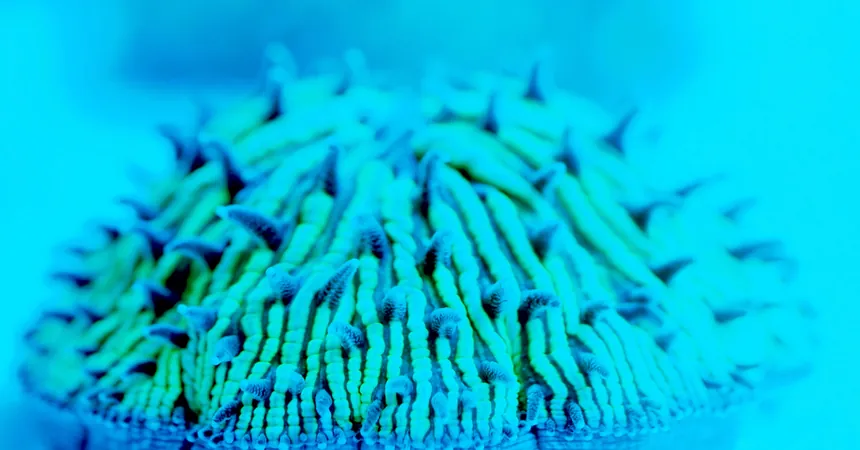
Unveiling the Secret Lives of "Walking" Corals: Nature's Tiny Movers
2025-01-23
Author: Kai
Introduction
Corals, known for their vibrant hues and complex structures, are often seen as the architects of the underwater world, creating vast reefs that harbor an astonishing array of marine life. However, what many do not realize is that most corals are stationary, bound to their locations as they form these intricate ecosystems. Yet, nestled among the over 6,000 known species of coral is a fascinating anomaly—solitary mushroom corals capable of movement.
Research by Brett Lewis
Brett Lewis, a marine ecologist at Queensland University of Technology in Australia, has embarked on groundbreaking research to explore the locomotion of these pint-sized corals. "They’re very little, and they are adorable," he remarked, highlighting their unique characteristics.
Experimental Setup
In an innovative study published in the journal PLoS One, Lewis and his team illuminated two areas within a tank—one mimicking shallow coastal habitats with white light, and the other representing deeper ocean locations with blue light. To their surprise, the mushroom corals exhibited a distinct preference for the serene, blue-lit areas, slowly inching toward them over time.
Mechanics of Movement
The mechanics of their movement closely resemble those of jellyfish. Lewis described how mushroom corals utilize a process of inflating and rapidly releasing their outer tissues, akin to the pulsating motion of a jellyfish. "It's like they pop themselves forward, hopping across the substrate," he explained.
Observational Insights
While their motion may appear sprightly in time-lapse recordings, real-time observation reveals a much slower pace. In fact, the corals moved just over an inch in several hours, exemplifying the unique adaptation that has allowed them to thrive over millions of years. "I watched this thing for a very long time, thinking it was going to pop," Lewis chuckled. "It was quite a slow process."
Reasons for Slow Migration
The reasons for this slow migration are manifold. Mushroom corals often start life nestled among denser coral colonies, which can be subject to turbulent waters or competition for space. As they mature, seeking the tranquil embrace of deeper waters provides a sanctuary for growth and reproduction. This strategic movement helps them evade unfavorable conditions, such as being buried under sand or competing with aggressive species like toxic sponges.
Significance of Movement
Despite their incremental progress seeming trivial compared to the grand migrations of larger animals like wildebeest or monarch butterflies, these little corals’ journeys are incredibly significant within their context. “At their scale, they’re so little that this is such a large movement for them,” said Lewis. In the world of mushroom corals, even the smallest strides are crucial for survival.
Conclusion
This groundbreaking research not only highlights the incredible adaptability of these creatures but also emphasizes the intricate and delicate balance of marine ecosystems that depend upon them. As we uncover the secrets of mushroom corals, we gain valuable insights into the resilience of nature, reminding us of the importance of protecting these underwater wonders. Who knew that some of the ocean's smallest inhabitants are capable of such remarkable feats?



 Brasil (PT)
Brasil (PT)
 Canada (EN)
Canada (EN)
 Chile (ES)
Chile (ES)
 Česko (CS)
Česko (CS)
 대한민국 (KO)
대한민국 (KO)
 España (ES)
España (ES)
 France (FR)
France (FR)
 Hong Kong (EN)
Hong Kong (EN)
 Italia (IT)
Italia (IT)
 日本 (JA)
日本 (JA)
 Magyarország (HU)
Magyarország (HU)
 Norge (NO)
Norge (NO)
 Polska (PL)
Polska (PL)
 Schweiz (DE)
Schweiz (DE)
 Singapore (EN)
Singapore (EN)
 Sverige (SV)
Sverige (SV)
 Suomi (FI)
Suomi (FI)
 Türkiye (TR)
Türkiye (TR)
 الإمارات العربية المتحدة (AR)
الإمارات العربية المتحدة (AR)